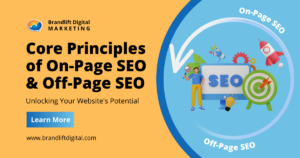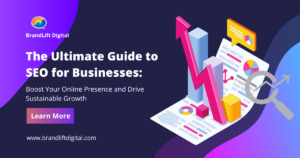Table of Contents
- I. What is SEO?
- II. Understanding Search Engines
- III. Key SEO Elements
- IV. Technical SEO
- V. Local SEO
- VI. SEO Content Strategy
- VII. Measuring and Analyzing SEO Success
- VIII. SEO Trends and Future Considerations
Welcome to the Ultimate Guide to SEO for Businesses! In today’s digital landscape, search engine optimization (SEO) plays a crucial role in ensuring the success and growth of your business. By optimizing your website and content, you can improve your visibility in search engine results, attract organic traffic, and ultimately drive conversions and revenue.
This comprehensive guide will walk you through the key principles, strategies, and best practices of SEO, equipping you with the knowledge and tools to enhance your online presence and stay ahead of the competition.
What is SEO?
Search Engine Optimization (SEO) is the practice of optimizing your website and its content to enhance its visibility and ranking on search engine results pages (SERPs). SEO encompasses a range of strategies and techniques that help search engines understand your website’s relevance to specific search queries.
By optimizing various aspects of your website, such as its structure, content, and technical elements, you can improve your chances of appearing higher in search results, driving more organic (non-paid) traffic to your site.
Why SEO Matters for Businesses
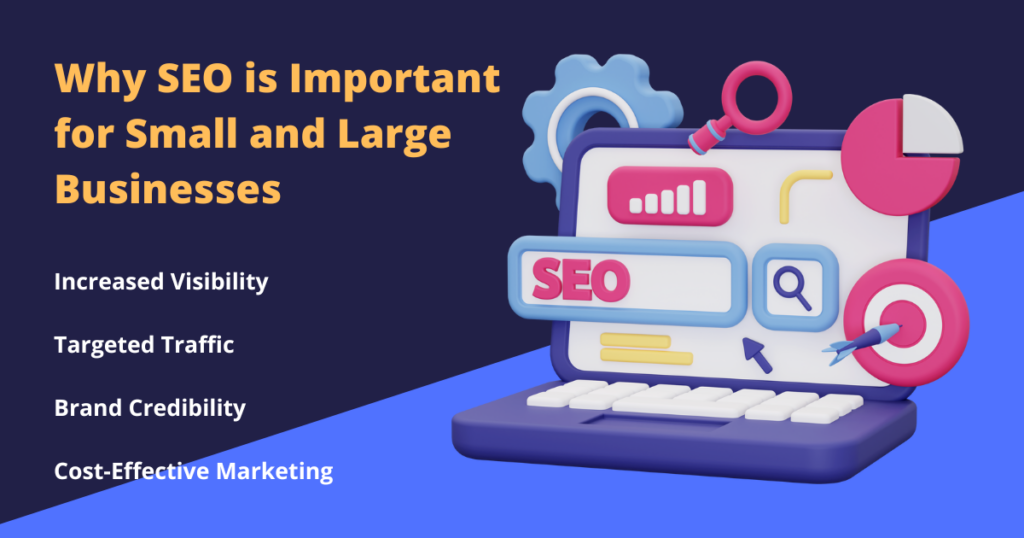
In today’s digital era, the importance of SEO for businesses cannot be overstated. When users search for information, products, or services on search engines like Google, they typically click on the top results that appear on the first page.
Studies show that the first page of search results captures the majority of user clicks, while subsequent pages receive significantly less attention. Therefore, if your website is not visible on the first page, you might be missing out on valuable opportunities to connect with potential customers.
Implementing effective SEO strategies means businesses can significantly improve their online presence and reap several benefits:
Increased Visibility
SEO helps your website gain higher visibility in search results, making it easier for users to find you when searching for relevant keywords. Improved visibility leads to increased organic traffic to your site.
Targeted Traffic
SEO allows you to target specific keywords and phrases that are relevant to your business. By optimizing your website for these keywords, you attract highly targeted traffic that is more likely to convert into customers.
Brand Credibility
Higher search engine rankings instill trust and credibility among users. When your website appears on the first page of search results, it signals to potential customers that you are a reputable and reliable business in your industry.
Cost-Effective Marketing
Compared to other forms of digital marketing, such as paid advertising, SEO offers a cost-effective long-term strategy. Once your website ranks well organically, you can continue to attract traffic without ongoing ad spend.
The Evolution of SEO
Over the years, SEO has undergone significant evolution to adapt to changing search engine algorithms and user behavior. In the early days of SEO, keyword stuffing and manipulating backlinks were common practices to boost rankings.
However, search engines, led by Google, realized the importance of delivering high-quality, relevant results to users. This led to the development of sophisticated algorithms that prioritize user intent, content quality, and overall user experience.
Modern SEO now emphasizes creating valuable and user-centric content, optimizing website structure and speed, building high-quality backlinks, and providing a seamless mobile experience.
SEO has evolved into a holistic approach that integrates various elements to improve a website’s visibility and provide the best possible user experience. Staying abreast of the latest SEO trends allows businesses to adapt their strategies and remain competitive in the ever-changing digital landscape.
Understanding Search Engines
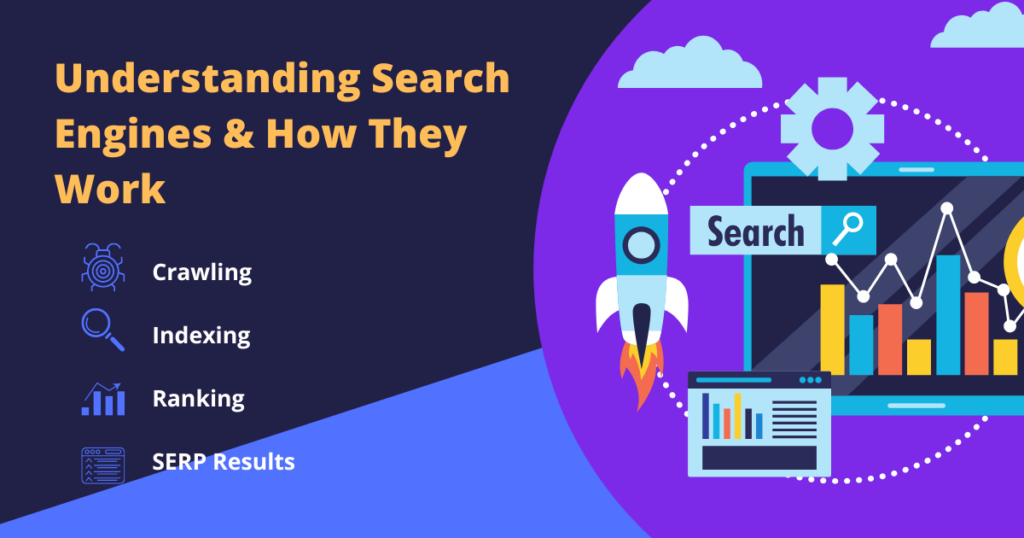
Search engines, such as Google, Bing, and Yahoo, are powerful tools that help users find information on the internet. Understanding how search engines work is crucial for optimizing your website and improving its visibility in search results.
How Search Engines Work
While search engines employ complex algorithms, the basic process can be summarized into the following steps:
1. Crawling
Search engines use automated programs called “crawlers” or “spiders” to browse the web and discover web pages. Crawlers follow links from one page to another, collecting information about the content and structure of each page they encounter.
2. Indexing
Once a web page is discovered, search engines analyze its content and store relevant information in their index. The index serves as a massive database that contains information about all the web pages that the search engine has crawled.
3. Ranking
When a user performs a search query, the search engine retrieves relevant pages from its index. The search engine then applies its ranking algorithm to evaluate and order the results based on various factors, including relevance, authority, and user experience.
4. Displaying Results
Finally, the search engine presents the search results to the user in the form of a search engine results page (SERP). The SERP typically includes a combination of organic search results, paid advertisements, featured snippets, and other search features.
The Importance of Keywords
Keywords are the foundation of search engine optimization. These are the words and phrases users enter into search engines when looking for information. Integrating relevant keywords into your website’s content helps search engines understand the topic and relevance of your pages.
When selecting keywords, it’s essential to consider their search volume, competition, and relevance to your business. Long-tail keywords, which are more specific phrases, can often be more effective in targeting your specific audience and attracting highly relevant traffic.
However, modern SEO extends beyond keyword matching. Search engines now take into account factors like user intent, semantic search, and natural language processing to deliver the most relevant results. Thus, it’s crucial to create content that addresses user needs and provides comprehensive information on the topic.
By conducting thorough keyword research, optimizing your website’s content, and using keywords strategically in meta tags, headings, and body text, you can enhance your website’s visibility and increase its chances of ranking higher in search results.
Keywords VS Quality Content
While keywords remain important, it’s equally vital to focus on user intent and provide valuable content that satisfies users’ search queries. Search engines strive to deliver the best possible user experience, so they prioritize websites that offer high-quality, informative, and engaging content.
In addition to incorporating keywords naturally within your content, consider related terms and synonyms that can enhance the context and relevance of your pages. This approach helps search engines understand the breadth and depth of your content, further boosting your chances of ranking well.
It’s worth noting that keyword stuffing, or overloading your content with excessive keywords, is strongly discouraged. Such practices not only make your content appear spammy but can also lead to penalties from search engines. Instead, focus on creating valuable content that naturally incorporates keywords in a way that benefits your readers.
Remember, SEO is an ongoing process. Regularly reviewing and refining your keyword strategy based on user behavior, industry trends, and algorithm updates is essential. Tools like Google’s Keyword Planner, SEMrush, or Moz Keyword Explorer can assist you in identifying relevant keywords and understanding their search volume and competition. But investing in a dedicated SEO marketing service is the best way to stay on top of SEO trends and content needs.
By understanding how search engines work, staying updated on algorithm changes, and conducting comprehensive keyword research, you can optimize your website’s content to align with user intent and increase your visibility in search results.
Key SEO Elements
Search engine optimization involves a multitude of elements, both on and off your website, that work together to increase your online visibility. These elements are referred to as on-page and off-page SEO. Understanding these key elements and implementing them effectively can significantly impact your website’s search engine rankings and drive traffic to your site.
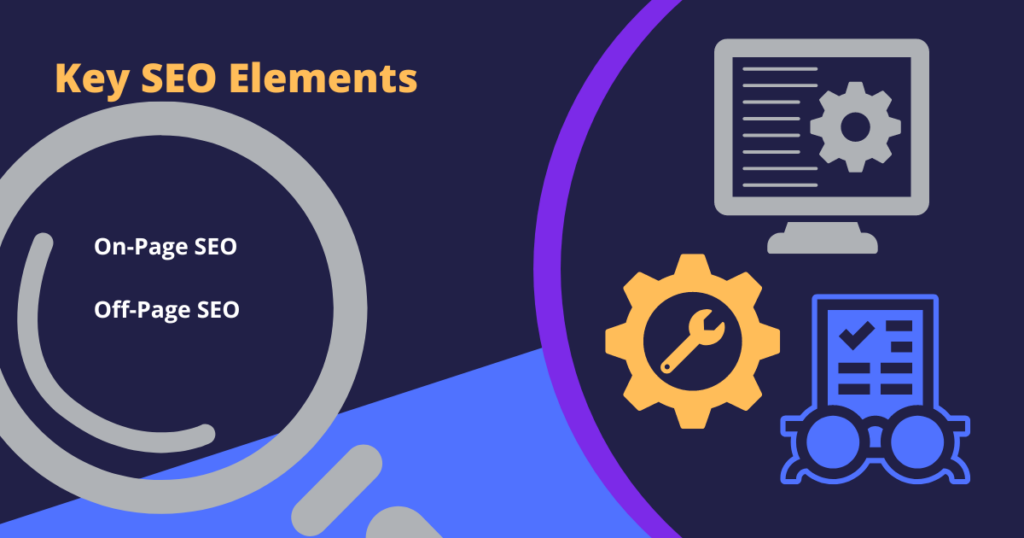
1. On-Page SEO
On-page SEO refers to optimizing your website’s content and structure to improve its search engine visibility. The following are essential components of on-page SEO:
Website Architecture and Navigation
Website architecture and navigation refer to the organization of your website’s pages and how they link together. A clear and intuitive website structure ensures that search engines and users can easily navigate and understand your site’s content. This includes using descriptive URLs, having a logical page hierarchy, and providing internal links between related pages.
Keyword Research and Optimization
Keyword research is the process of identifying and analyzing the terms and phrases people use when searching for information related to your business or industry. Effective keyword research can help you understand your target audience better and improve your website’s relevance to search engine queries.
Optimizing your content with relevant keywords and phrases can also help improve its visibility in search engine results pages (SERPs). However, it’s important to use keywords strategically and naturally throughout your content to avoid keyword stuffing, which can negatively impact your rankings.
A good practice is to stick to a 2% keyword density. This means your content should include your target keyword twice per 100 words.
Meta Tags and Descriptions
Meta tags and descriptions are HTML elements that provide information about your website to search engines and users. The title tag and meta description appear in search results and can significantly impact whether users click through to your website.
It’s essential to write unique and compelling meta tags and descriptions that accurately reflect your content and entice users to visit your site. Additionally, including your target keywords in these elements can also improve your website’s relevance to search engine queries.
Content Optimization
Content optimization involves creating high-quality, relevant, and engaging content that satisfies user intent and supports your overall SEO strategy. This includes incorporating target keywords and related terms naturally throughout your content, using headers and subheaders to organize your content, and ensuring your content is mobile-friendly.
2. Off-Page SEO
Off-page SEO refers to the activities and tactics that improve your website’s visibility outside of your website. The following are essential components of off-page SEO:
Link-Building Strategies
Link-building is the process of acquiring external links to your website from other authoritative and relevant websites. High-quality backlinks signal to search engines that your content is valuable and authoritative, improving your website’s search engine rankings.
Effective link-building strategies include creating high-quality content, building relationships with other websites in your industry, and using social media to promote your content. Anchor text is also an important part of SEO when it comes to backlinking, and the text should always be relevant to the destination link.
Technical SEO

Technical SEO refers to the optimization of your website’s technical elements that can impact its search engine visibility. The following are essential components of technical SEO:
1. Website Speed and Performance
Website speed and performance play a crucial role in both user experience and search engine rankings. Slow-loading websites can negatively impact user engagement and increase bounce rates, which can negatively impact your search engine rankings.
Optimizing your website’s speed and performance includes reducing the size of your images and videos, compressing your website’s files, and leveraging caching techniques.
2. Mobile Optimization
With the increasing use of mobile devices to access the internet, mobile optimization has become a critical aspect of SEO. Mobile-friendly websites not only provide a better user experience but are also favored by search engines.
To optimize your website for mobile devices, you need to ensure it is responsive, loads quickly on mobile devices, and uses a legible font size. In recent years, utilizing Google standard fonts instead of custom fonts for the majority of content is also a ranking metric among Google’s search engine.
3. Structured Data Markup
Structured data markup is a code added to your website’s HTML that provides search engines with additional information about your content. Structured data can improve your website’s visibility in search engine results pages and enhance its appearance by adding rich snippets, such as images and reviews.
4. XML Sitemaps
An XML sitemap is a file that lists all the pages on your website to help search engines crawl and index your website’s content more efficiently. Creating and submitting an XML sitemap to search engines can ensure all your website’s pages are crawled and indexed. Work with an experienced SEO marketer to build XML sitemaps and custom web designs.
5. Robots.txt and Crawling
Robots.txt is a file that gives instructions to search engine robots on how to crawl and index your website’s content. You can use the robots.txt file to prevent search engine robots from crawling and indexing specific pages or directories on your website.
Crawling refers to the process of search engine robots scanning your website’s pages and content to index them. Ensuring your website is crawlable and providing search engine robots with clear instructions on how to crawl and index your content can improve your website’s visibility in search engine results pages.
Local SEO

Local SEO focuses on optimizing your online presence to attract local customers and improve your visibility in local search results. The following are essential components of local SEO:
Importance of Local SEO for Businesses
Like general SEO, local SEO is crucial for businesses that rely on local customers or have a physical location. With the increasing use of mobile devices, more people are using search engines to find local businesses and services. Optimizing your website for local search can help you reach your target audience at the right time when they are actively looking for products or services in their area.
Local SEO also helps businesses appear in Google’s “Local Pack” or “Map Pack,” which is the set of local business listings displayed prominently in search results. Being featured in the Local Pack can significantly boost your visibility and attract more customers. A professional marketing service can assist in local conversion rate optimization, turning local shoppers into buyers.
Optimizing Google My Business
Google My Business (GMB) is a free tool that allows businesses to manage their online presence on Google, including their business information, reviews, and photos. Optimizing your GMB listing is essential for local SEO success. Here’s how to optimize your Google My Business listing:
1. Claim and Verify Your Listing
Claim your business on GMB and go through the verification process to ensure that you have control over your listing.
2. Provide Accurate and Detailed Information
Fill out your GMB profile with accurate and up-to-date information, including your business name, address, phone number, website, operating hours, and description. Ensure consistency with your business information across all online platforms.
3. Get Positive Reviews
Encourage your customers to leave reviews on your GMB listing. Positive reviews not only enhance your reputation but also improve your chances of appearing in the Local Pack.
4. Add Photos
Include high-quality photos of your business, products, and services to make your listing more appealing and informative.
Local Citations and Directories
Local citations are online mentions of your business’s name, address, and phone number (NAP) on other websites, directories, and social platforms. These citations help search engines verify the accuracy and legitimacy of your business information.
To optimize local citations:
- Ensure Consistency – Consistency is crucial for NAP information across all citations and directories. Make sure your business name, address, and phone number are consistent and accurate.
- Claim and Update Directory Listings – Claim your business profiles on popular online directories such as Yelp, Yellow Pages, and industry-specific directories. Update your information and ensure it matches your GMB listing.
- Encourage Customer Reviews – Positive reviews on various directories can improve your visibility and credibility. Encourage satisfied customers to leave reviews on relevant platforms.
- Localized Content and Keywords – Incorporate localized keywords and create content that is relevant to your local audience. This can help improve your rankings in local search results.
By focusing on local SEO, optimizing your Google My Business listing, and managing local citations and directories, you can increase your online visibility in local search results and attract more customers from your target area.
Remember to regularly monitor and update your local SEO efforts as local search trends and algorithms evolve over time.
SEO Content Strategy
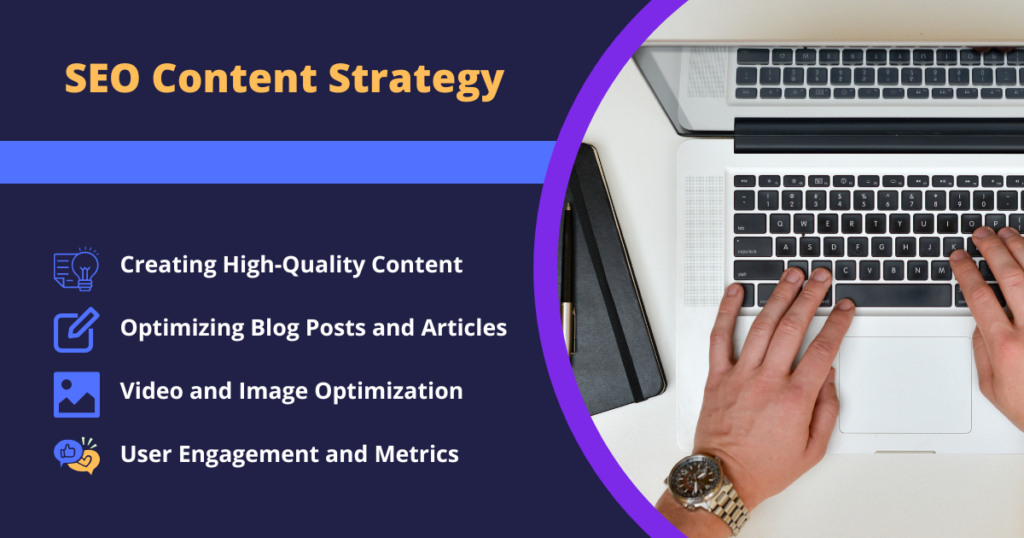
A well-crafted content strategy is crucial for SEO success. By creating high-quality and optimized content, you can enhance your website’s visibility, engage your audience, and drive organic traffic. The following are essential components of an effective SEO content strategy:
Creating High-Quality Content
High-quality content is the foundation of any successful SEO strategy. Focus on producing content that is informative, engaging, and valuable to your target audience.
Tips for Creating High-quality Content
- Understand Your Audience – Research your target audience’s interests, pain points, and search intent. Tailor your content to address their needs and provide solutions.
- Original and Unique Content – Ensure that your content is original, unique, and offers a fresh perspective. Avoid duplicating content from other sources or engaging in plagiarism.
- Comprehensive and In-Depth – Create comprehensive and in-depth content that covers the topic thoroughly. Longer-form content tends to perform better in search results.
- Well-Written and Readable – Craft your content with proper grammar, structure, and readability. Use headings, subheadings, bullet points, and concise paragraphs to make your content scannable.
Optimizing Pages, Blog Posts, and Articles
Optimizing your blog posts and articles ensure that search engines can understand your content and rank it appropriately. Here are some blog post and article optimization techniques:
Keyword Research
Conduct keyword research to identify relevant keywords and phrases related to your content. Incorporate these keywords naturally into your title, headings, and throughout your content.
Title Tags and Meta Descriptions
Write compelling and keyword-rich title tags and meta descriptions that accurately describe your content. These elements appear in search engine results and can impact click-through rates. Using a mix of numbered headers, bullet points, and lists in your content creates key spaces for SERPS to generate snippet cards.
URL Structure
Use descriptive and SEO-friendly URLs that include your target keywords. Short, concise, and readable URLs tend to perform better.
Internal and External Links
Include relevant internal links within your content to guide users to related pages on your website. Link to other blog posts, landing pages, service pages, and informative pages on your website.
Additionally, link to reputable external sources when appropriate to provide further value to your readers. Try to link to reputable and authoritative sources with content dating within the last two years.
Video and Image Optimization
Optimizing your videos and images can help improve their visibility in search results and drive additional organic traffic. Consider the following optimization techniques:
- Video Optimization – Provide clear and descriptive titles, relevant tags, and detailed descriptions for your videos. Transcribe your video content to make it accessible to search engines.
- Image Optimization – Optimize your images by using descriptive filenames, alt text, and captions. This also conforms to modern standards making website content accessible to the visually impaired. Compress your images to ensure fast loading times without compromising quality.
User Engagement and Metrics Strategies
User engagement metrics, such as click-through rates, bounce rates, and time on the page, are important signals that search engines consider when ranking your content. Here are some strategies to improve user engagement:
Compelling Call-to-Actions (CTAs)
Include clear and persuasive CTAs within your content to encourage user interaction, such as signing up for a newsletter, sharing your content, or leaving comments.
Improve Page Load Speed
Ensure that your website and content load quickly to minimize bounce rates. Optimize images, leverage caching techniques, and use a reliable hosting provider.
Monitor and Analyze Metrics
Regularly analyze user engagement metrics using tools like Google Analytics. Identify patterns, trends, and areas for improvement to refine your content strategy.
Remember to regularly update and optimize your content based on user feedback, industry trends, and algorithm updates. A well-executed SEO content strategy can help increase your website’s visibility, attract more organic traffic, and establish your brand as an authoritative resource in your industry.
Measuring and Analyzing SEO Success

Measuring and analyzing the success of your SEO efforts is essential to understand the impact of your strategies and making data-driven decisions. The following components will help you effectively measure and analyze your SEO performance:
1. Setting SEO Goals and KPIs
Before diving into analyzing SEO data, it’s important to establish clear goals and key performance indicators (KPIs) that align with your business objectives. Examples of SEO goals include improving organic search visibility, increasing organic traffic, and driving conversions.
Define specific KPIs that will help you track progress towards these goals, such as keyword rankings, organic traffic volume, and conversion rates.
2. Google Analytics and Search Console
Google Analytics and Google Search Console are powerful tools for monitoring and analyzing your website’s SEO performance.
Google Analytics provides insights into your website’s traffic, user behavior, and conversion metrics. With Google Analytics, you can track organic traffic, user engagement, and conversion goals. Analyze metrics such as sessions, bounce rates, average session duration, and conversion rates to gauge the effectiveness of your SEO efforts.
Google Search Console offers valuable information about your website’s presence in Google’s search results. Use Search Console to monitor search impressions, click-through rates, and average position for specific keywords. It also helps identify indexing issues, crawl errors, and security concerns that may impact your SEO performance.
3. Tracking Organic Traffic and Conversions
Organic traffic comprises any visits to your site that weren’t paid for using advertising. Tracking organic traffic and conversions is crucial for assessing the impact of your SEO strategies. By understanding how organic traffic behaves and converts on your website, you can optimize your efforts accordingly.
Use Google Analytics to track organic traffic trends over time. Monitor metrics such as sessions, new users, page views, and traffic sources. Segment your data to analyze organic traffic by landing pages, geographic locations, and user demographics.
Set up conversion tracking in Google Analytics to measure specific actions users take on your website, such as form submissions, purchases, or newsletter sign-ups. Analyze conversion rates, goal completions, and revenue generated from organic traffic to evaluate the effectiveness of your SEO campaigns.
4. SEO Tools and Reporting
Utilize SEO tools and reporting to gain deeper insights into your website’s performance and track your progress towards SEO goals.
SEO Keyword Ranking Tools
Monitor keyword rankings to assess your website’s visibility in search results. Tools like SEMrush, Moz, or Ahrefs provide keyword tracking features that allow you to track your target keywords and compare your rankings against competitors.
SEO Backlink Analysis Tools
Analyze your website’s backlink profile to identify new link-building opportunities and monitor the quality and quantity of backlinks. Tools like Majestic, Moz, or Ahrefs provide comprehensive backlink analysis features.
SEO Custom Reports
Create custom reports using Google Analytics or other reporting tools to consolidate key SEO metrics and KPIs. Regularly review these reports to track progress, identify trends, and make informed decisions to optimize your SEO strategies.
Regularly analyze the data from these tools, track trends, and compare against your SEO goals and KPIs. By monitoring your SEO performance, you can identify areas for improvement, make data-driven optimizations, and ensure your SEO strategies align with your overall business objectives.
SEO Trends and Future Considerations

Staying updated with the latest SEO trends and anticipating future developments is crucial for maintaining a competitive edge. Consider the following emerging trends and future considerations in SEO:
Voice Search Optimization
The rise of voice assistants and smart speakers has significantly impacted search behavior. Voice search is gaining popularity as more users rely on voice commands to perform searches. To optimize for voice search:
- Use conversational keywords
- Provide concise answers
- Structured data markup
Optimize your content with natural, long-tail keywords that reflect how people speak in everyday conversations. Focus on providing direct, concise answers to commonly asked questions to increase the chances of your content being featured in voice search results. Implement structured data markup to provide search engines with additional context about your content, making it more suitable for voice search queries.
Mobile-First Indexing
Mobile devices are increasingly becoming the primary means of accessing the internet. Google has transitioned to mobile-first indexing, where the mobile version of a website is prioritized for indexing and ranking. To optimize for mobile-first indexing:
- Ensure responsive web design: Create a website that automatically adjusts to different screen sizes and devices, providing an optimal user experience across mobile and desktop.
- Optimize mobile page speed: Optimize your website’s loading speed on mobile devices by minimizing file sizes, leveraging caching techniques, and optimizing images.
- Enhance mobile usability: Ensure your website is easy to navigate and interact with on mobile devices. Test your website’s mobile usability and address any issues that may affect user experience.
Artificial Intelligence and SEO
Artificial intelligence (AI) is playing an increasingly significant role in search engine algorithms. Search engines like Google are using AI to understand search queries, interpret content, and deliver more relevant search results. The following are AI-related SEO ranking considerations:
Natural language processing: Optimize your content with natural, conversational language that aligns with how AI-powered search engines interpret and understand user queries.
User intent optimization: Focus on understanding user intent behind search queries and create content that satisfies those intents. AI algorithms aim to deliver the most relevant content to users, so aligning with user intent is crucial.
User Experience (UX) and Core Web Vitals
User experience has become a prominent ranking factor, and Google’s Core Web Vitals have gained significance in assessing a website’s user experience. The following considerations can help improve UX and meet Core Web Vitals requirements:
- Page loading speed: Optimize your website to load quickly across all devices. Minimize server response time, leverage caching, and reduce the size of page elements.
- Mobile-friendliness: Ensure your website is responsive and provides a seamless user experience on mobile devices. Test your website’s mobile-friendliness using Google’s Mobile-Friendly Test.
- Visual stability: Avoid elements that cause unexpected layout shifts (CLS) on your website. Ensure that page elements load in a stable manner to prevent frustrating user experiences.
- Content accessibility: Make your website accessible to all users, including those with disabilities. Follow accessibility guidelines, provide alternative text for images, and ensure a logical reading order for screen readers.
By staying updated on these emerging trends and future considerations, you can proactively adapt your SEO strategies and ensure that your website remains optimized for evolving search engine algorithms and user preferences. Continuously monitoring industry developments and adjusting your approach accordingly will help you stay ahead in the dynamic world of SEO.
Major Google Search Engine Algorithm Updates
Search engines continually refine their algorithms to deliver the most relevant and useful search results to users. While the specific details of search engine algorithms are closely guarded secrets, there are a few notable algorithms that have had a significant impact on SEO.
Google PageRank
Developed by Google’s co-founders, Larry Page and Sergey Brin, PageRank revolutionized search engine technology by considering the number and quality of backlinks pointing to a web page as an indication of its authority and relevance.
Google Panda
The Panda algorithm aimed to reduce the visibility of low-quality and thin content by assigning a quality score to web pages. Websites with poor-quality content, duplicate content, or excessive ads were penalized, while those with high-quality, original content were rewarded.
Google Penguin
Penguin targeted websites that engaged in manipulative link-building practices, such as buying links or participating in link schemes. This algorithm downgraded the rankings of websites with unnatural or spammy backlink profiles.
Google Hummingbird
Google’s Hummingbird update marked a shift toward understanding user intent and context. It focused on interpreting the meaning behind search queries rather than relying solely on matching keywords. This update laid the foundation for Google’s increased emphasis on semantic search.
Conclusion
Congratulations! You have now completed the Ultimate Guide to SEO for Businesses. By implementing the strategies and best practices outlined in this guide, you’ll be well on your way to achieving improved search engine rankings, increased organic traffic, and sustainable growth for your business.
Remember, SEO is an ongoing process, so stay informed about the latest trends and adapt your strategies accordingly. Embrace the power of SEO and unlock the true potential of your online presence!
By partnering with BrandLift Digital as your SEO service provider, you can leverage our expertise and industry insights to take your SEO efforts to new heights. Contact us today to learn more about how we can help you achieve your business goals through effective SEO strategies and implementation.



